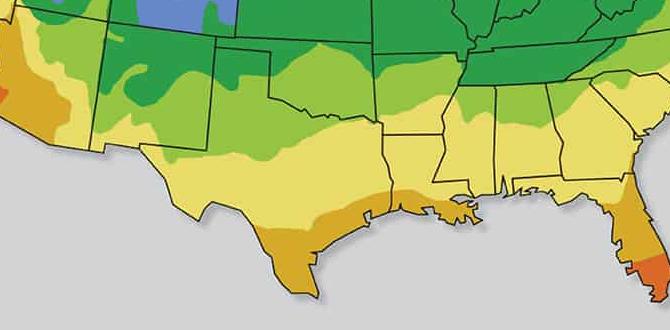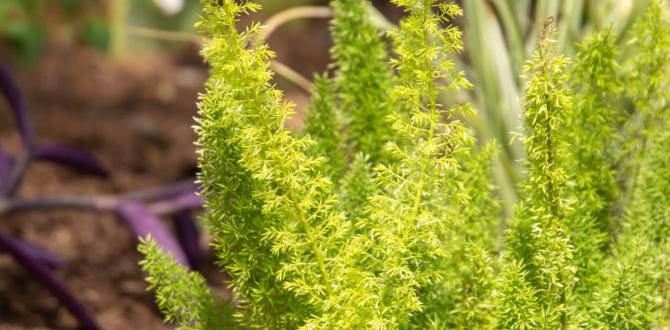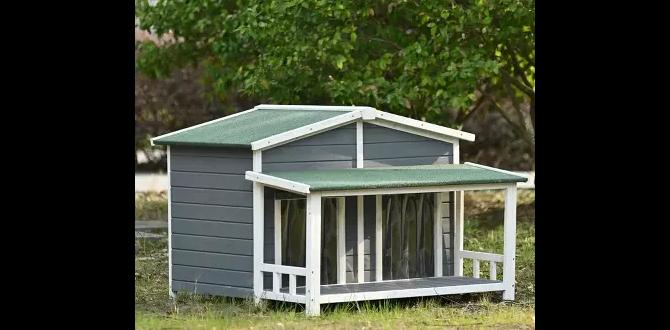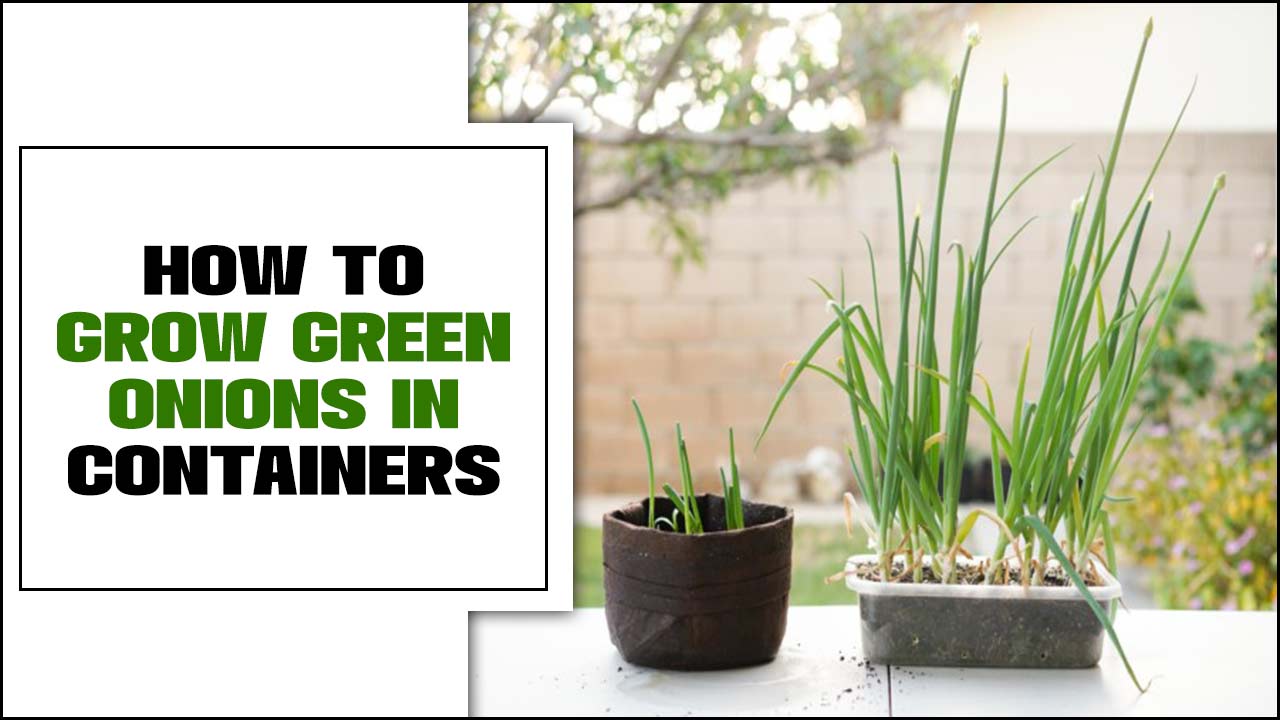Have you ever wondered what zone Texas is for gardening? If you live in Texas, this question is super important. Knowing your gardening zone helps you choose the right plants. You don’t want to spend time and money on flowers that won’t survive. Right?
Texas is a big state with different climates. Some areas are hot and dry, while others have cooler temperatures. This means that the gardening zone can vary a lot. For instance, did you know that parts of Texas are in two different zones? That’s a fun fact that surprises many new gardeners!
Understanding your gardening zone is like having a secret map. This map guides you to the best plants for your area. Let’s dive deeper to find out more about what zone Texas is for gardening. You might discover some new plants you’d love to grow!
What Zone Is Texas For Gardening: Essential Tips And Insights Understanding The Gardening Zones In Texas Texas Is A Vast State With Diverse Climates, Which Can Make Gardening A Unique Challenge Depending On The Location. Understanding What Zone Texas Is For Gardening Is Crucial For Selecting The Right Plants And Ensuring A Successful Gardening Venture. The United States Department Of Agriculture (Usda) Has Divided The Country Into Various Gardening Zones Based On The Average Annual Minimum Temperature. In Texas, The Gardening Zones Range From Zone 6A In The Northern Parts To Zone 10A In The Southern Regions, Including Areas Like The Rio Grande Valley. These Zones Influence What Types Of Plants Can Thrive In Your Garden. Here’S A Closer Look At The Different Gardening Zones Within Texas And Tips On How To Choose The Best Plants For Your Specific Zone. Gardening Zones Breakdown In Texas 1. **Zone 6 (Northern Texas)** – Typically Includes Areas Like The Panhandle. – Suitable Plants: Cold-Hardy Varieties Including Certain Perennial Flowers, Shrubs, And Even Fruit Trees Like Peaches That Can Withstand Colder Temperatures. 2. **Zone 7 (North-Central Texas)** – Common In Towns Such As Fort Worth And Abilene. – Suitable Plants: Often Features A Mix Of Cold-Tolerant And Heat-Resistant Plants, Such As Lavender, Coneflowers, And A Variety Of Vegetables. 3. **Zone 8 (Central Texas)** – Covers Cities Like Austin And San Antonio. – Suitable Plants: A Wider Variety Of Fruits And Vegetables, Including Tomatoes, Peppers, And Citrus Trees Flourish Here. 4. **Zone 9 (Southeast Texas)** – Found In Areas Like Houston And Galveston. – Suitable Plants: Heat-Loving Plants, Including Hibiscus, Bougainvillea, And Okra Grow Well In This Warmer Climate. 5. **Zone 10 (South Texas)** – Includes Regions Such As The Rio Grande Valley. – Suitable Plants: Tropical And Subtropical Plants Thrive, Including Palms, Mangoes, And Many Flowering Annuals. Tips For Gardening In Texas 1. **Know Your Zone**: Check Which Gardening Zone You Live In Within Texas To Tailor Your Plant Selection. 2. **Consider Local Climate**: Be Aware That Microclimates Can Exist Even Within The Same Gardening Zone Due To Factors Like Elevation And Proximity To Bodies Of Water. 3. **Plan For Seasons**: Texas Can Have Extreme Temperature Fluctuations. Plan For Both Heat And Potential Cold Snaps. 4. **Soil Preparation**: Texas Soils Can Vary Significantly; Improving Your Soil With Organic Matter And Mulch Will Benefit Your Plants. 5. **Plant Native Species**: Incorporating Native Plants Can Enhance Your Garden’S Resilience Against Pests And Diseases. 6. **Water Conservation**: Techniques Such As Drip Irrigation And Rainwater Harvesting Can Help In Managing Water Use Efficiently Due To Texas’S Often Dry Conditions. By Understanding What Zone Texas Is For Gardening, You Will Be Well-Equipped To Make Informed Choices About The Plants That Will Flourish In Your Garden, Thus Maximizing Your Gardening Success While Embracing The Regional Beauty Of Texas’ Flora.
What Zone is Texas for Gardening?
Texas spans several gardening zones, primarily from USDA Zone 6 to Zone 9. This means that different areas have different climate traits. For instance, the Panhandle often experiences cold winters, while the Gulf Coast enjoys a milder climate. Understanding your zone helps you pick the best plants. Did you know that selecting the right plants can make your garden bloom beautifully? Check your zone to grow the healthiest flowers and veggies! Happy gardening!Understanding USDA Plant Hardiness Zones
Definition and purpose of plant hardiness zones. Importance in gardening and landscaping.
Plant hardiness zones help gardeners know what plants can thrive in their area. These zones are based on climate and temperature. The USDA created a map to divide the U.S. into different zones. Understanding these zones is essential for gardening and landscaping.
- Choose plants that will grow well in your zone.
- Protect plants from winter cold.
- Plan gardens that bloom at the right time.
For gardening success, knowing your hardiness zone is a must. It makes planting easier and helps create beautiful landscapes.
What Zone is Texas for Gardening?
Texas has different zones. The state mostly falls between zone 6 and zone 9. This range allows for a variety of plants, including hardy perennials and beautiful flowers.
Zone Differentiation in Texas Regions
Coastal areas: Unique climate factors and plant suitability. Central Texas: Mixed zone characteristics and challenges. West Texas: Extreme conditions and droughtresistant plants. North Texas: Seasonal variation and plant recommendations. South Texas: Tropical influences and diverse flora.Texas is a mixed bag when it comes to gardening zones! Let’s break it down, shall we? In the Coastal areas, the warm, humid climate welcomes tropical plants, though they might prefer a rain dance now and then. Next, Central Texas boasts varied conditions, making it a bit of a zone roller coaster, with both joys and challenges for gardeners. Heading to West Texas, extreme heat means plants need to be tough – think cacti and other drought-resistant heroes. North Texas experiences all four seasons, so don’t forget to dress them up for winter! Finally, South Texas enjoys a tropical twist, hosting plants that thrive under sunny skies. Whether you’re a pro or a beginner, Texas has a plant pal for everyone!
| Region | Climate Factors | Best Plants |
|---|---|---|
| Coastal Areas | Warm, humid | Tropical plants |
| Central Texas | Mixed conditions | Varied options |
| West Texas | Extreme heat | Drought-resistant |
| North Texas | Four seasons | Seasonal plants |
| South Texas | Tropical influences | Diverse flora |
Choosing the Right Plants for Your Texas Zone
Native plants and their benefits. Suggested plants for each zone in Texas.
When picking plants for your Texas garden, it’s smart to choose native ones. Native plants love their home and often need less water. Plus, they attract the bees and butterflies we all adore. Say goodbye to the picky plants! Let’s take a peek at some great options for your gardening zone in Texas.
| Texas Zone | Suggested Native Plants |
|---|---|
| Zone 6a | Black-eyed Susan, Little Bluestem |
| Zone 7b | Bluebonnet, Indian Blanket |
| Zone 8a | Mexican Feather Grass, Texas Sage |
| Zone 9a | Salvia, Lantana |
Choosing the right plants helps your garden thrive. Remember, happy plants make for a happy gardener!
Gardening Tips for Texas Zones
Seasonal planting guides for each zone. Soil preparation and amendment suggestions. Watering strategies specific to different zones.
Texas has many gardening zones, each with different needs. To succeed, start by planting according to the season. Warm zones can grow veggies in spring. Cooler zones may plant in early fall. Next, prepare your soil. Add nutrients and improve drainage for healthy plants. Water differently based on your zone. Some need daily watering, while others do better with less. Here are some quick tips:
- Planting Season: Follow local zone guides.
- Soil Prep: Test pH and add compost.
- Watering: Check moisture levels often.
When should I plant in Texas?
It depends on your zone. Warm zones plant as early as March. Cool zones often wait until April. Always check local weather!
Common Gardening Challenges in Texas
Pest and disease issues prevalent in specific zones. Adapting to extreme weather events and climate changes.Many gardeners in Texas face challenges due to pests and diseases. Aphids, caterpillars, and fungal infections can ruin plants quickly. In extreme heat, plants may wilt. Heavy rain can drown roots. Adapting is key. Here are some tips:
- Choose resistant plants.
- Water wisely to avoid overdoing it.
- Use mulch to keep soil cool.
Climate change also means more unpredictable weather. Stay alert to changes to help your garden thrive.
What Are Common Pests in Texas Gardening?
Common pests include aphids, grasshoppers, and whiteflies. They can harm plants quickly if not controlled.
Resources for Texas Gardeners
Local gardening clubs and extension services. Online databases and plant hardiness tools.Gardening in Texas is fun and rewarding. You can join local gardening clubs. These clubs offer help and knowledge. Plus, they know the best plants for your area. Extension services provide guidance on soil and pests. You can find knowledge on websites and online databases too. Use plant hardiness tools to check what will grow best.
What are good resources for Texas gardeners?
Local clubs and online tools make gardening easier. You can explore resources like buildings and libraries in your area. Do some research on your plant choices!
- Local gardening clubs for networking
- Extension services for expert advice
- Online databases for plant selection
- Plant hardiness tools for suitable plants
Success Stories from Texas Gardeners
Featured gardens and their zonespecific successes. Interviews or testimonials from gardeners across Texas.Many Texas gardeners have inspiring stories to share. These gardeners face different challenges but find success through hard work. Here are some highlights:
- Maria from Houston grows beautiful tomatoes, saying, “They love the warm climate!”
- James in Austin uses raised beds to manage drainage. His peppers thrive!
- Linda from Dallas uses native plants, attracting butterflies to her yard.
These testimonies show that with the right knowledge, anyone can garden successfully in Texas!
What zone is Texas for gardening?
Texas has many gardening zones. Generally, it ranges from zones 6 to 9. This means some plants will grow well in certain areas, while others may not. Understanding your zone helps you pick the best plants!
Conclusion
In Texas, gardening zones vary from 6 to 10. This means plants can thrive based on your area. Knowing your zone helps you choose the right plants. We can grow colorful flowers, tasty vegetables, and strong trees. Check your gardening zone to succeed in your gardening adventures! Explore local guides for more tips to create your perfect garden.FAQs
What Planting Zones Are Designated For Different Regions Of Texas?Texas has different planting zones based on climate. The USDA (United States Department of Agriculture) divides Texas into zones 6 to 9. The north part of Texas is usually zone 6, while the southern part can be zone 8 or 9. This means the types of plants that grow well change depending on where you are. Always check your zone before planting anything!
How Do The Usda Hardiness Zones Affect Plant Selection For Gardening In Texas?USDA hardiness zones help us know what plants can grow well in Texas. Each zone shows the coldest temperature a place can get. If you plant something that can’t survive the cold, it might die in winter. So, we choose plants that match our zone to keep them healthy and happy in our gardens.
What Are Some Common Plants That Thrive In Texas Gardening Zones?In Texas, some common plants that grow well are sunflowers, bluebonnets, and marigolds. You can also plant Texas sage and lantana. These plants love the warm weather and can handle different types of soil. They add color and beauty to your garden!
How Can Gardeners In Texas Adapt To The Varying Climate Conditions Across Different Zones?In Texas, we have different climate zones, so gardening can change a lot. You can start by choosing plants that grow well in your zone. Check the zone map for your area. Water your plants properly, especially when it’s hot. Add mulch to keep the soil moist. Finally, learn about the season changes to help your plants thrive.
What Resources Are Available To Help Texas Gardeners Understand Their Specific Gardening Zone?You can find helpful resources online and in books to learn about gardening zones in Texas. Websites like Texas A&M AgriLife offer guides specific to our state. You can also visit local libraries for gardening books. Local gardening clubs can share tips too. Don’t forget to ask at garden centers for advice!







